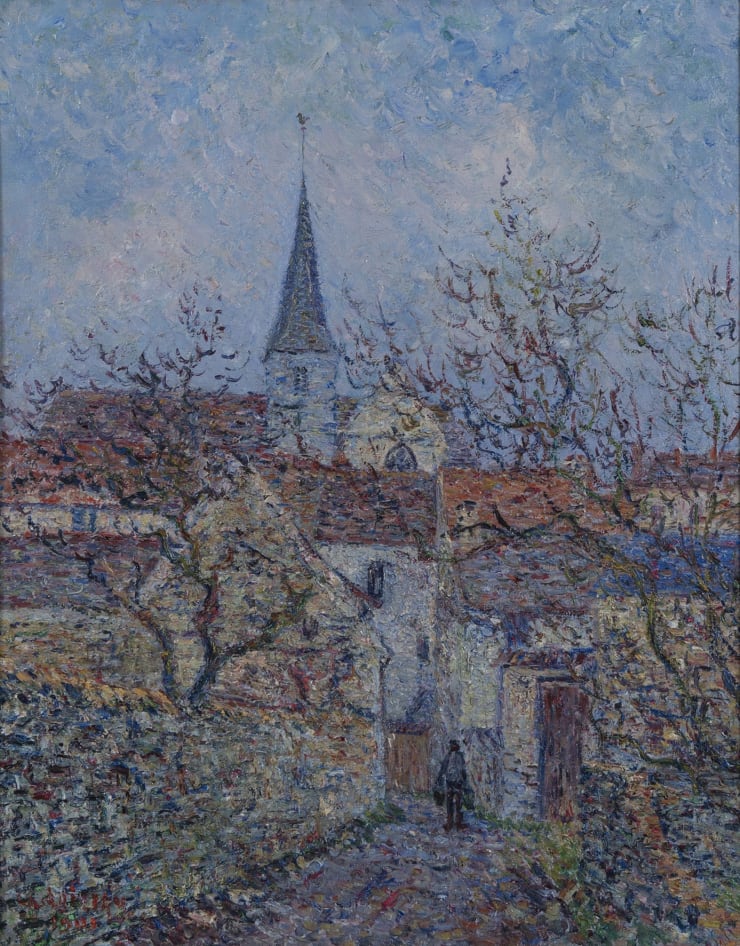Gustave Loiseau (1865-1935) French
古斯塔夫·卢瓦索在后印象派画家的传承中占据着独特的位置。他是一位安静却技艺精湛的观察者,通过画笔捕捉到法国乡村的不仅是其外貌,更是其律动与生命脉搏。出生于巴黎,卢瓦索与诺曼底及塞纳河谷的乡村景致有着深厚的情感联系。他一生致力于描绘自然界不断变化的情绪,年复一年地回到熟悉的地点作画,将这一创作过程转化为一种既沉思又现代的实践。
他曾短暂师从费尔南·金永(Fernand Quignon),并受到蓬塔万画派(Pont-Aven School)的影响,但卢瓦索很快走上了属于自己的道路——他摒弃学院派传统,而选择一种扎根于地点与氛围的直觉性艺术语言。他标志性的“交叉笔触”(en treillis)技法——交织而富有节奏感的涂抹方式——成为其成熟风格的象征,也巧妙地连接了印象派的光影表现与后印象派对结构的敏感把握。
卢瓦索的画布中流淌着静谧的动感:晨雾笼罩的蜿蜒小路、新雪覆盖的村庄屋顶、春日阳光下闪耀的河岸。他对时间的关注——无论是日常、四季,还是历史时间——体现在他对同一主题在不同条件下的反复描绘上,这种方式虽类似莫奈的系列创作,但情感上更内省、更具诗意。
尽管常常独自作画,卢瓦索与当时更广泛的艺术圈始终保持联系。他是“独立沙龙”和“秋季沙龙”的常客,其作品在生前便已受到重要藏家的青睐。如今,他的绘画被包括奥赛博物馆、小皇宫美术馆在内的重要法国机构收藏,同时也被芝加哥艺术学院等国际博物馆所珍藏。
在贝利画廊,卢瓦索的作品体现了一种尊重创新与传统延续并重的策展理念。他的画作——永恒、深沉且悄然革新——邀请观者沉思,并在细致观赏中获得回报。在他的艺术中,我们看到视觉与记忆的诗意融合,那些转瞬即逝的光线在他的笔下被永恒地捕捉,优雅而深远。







